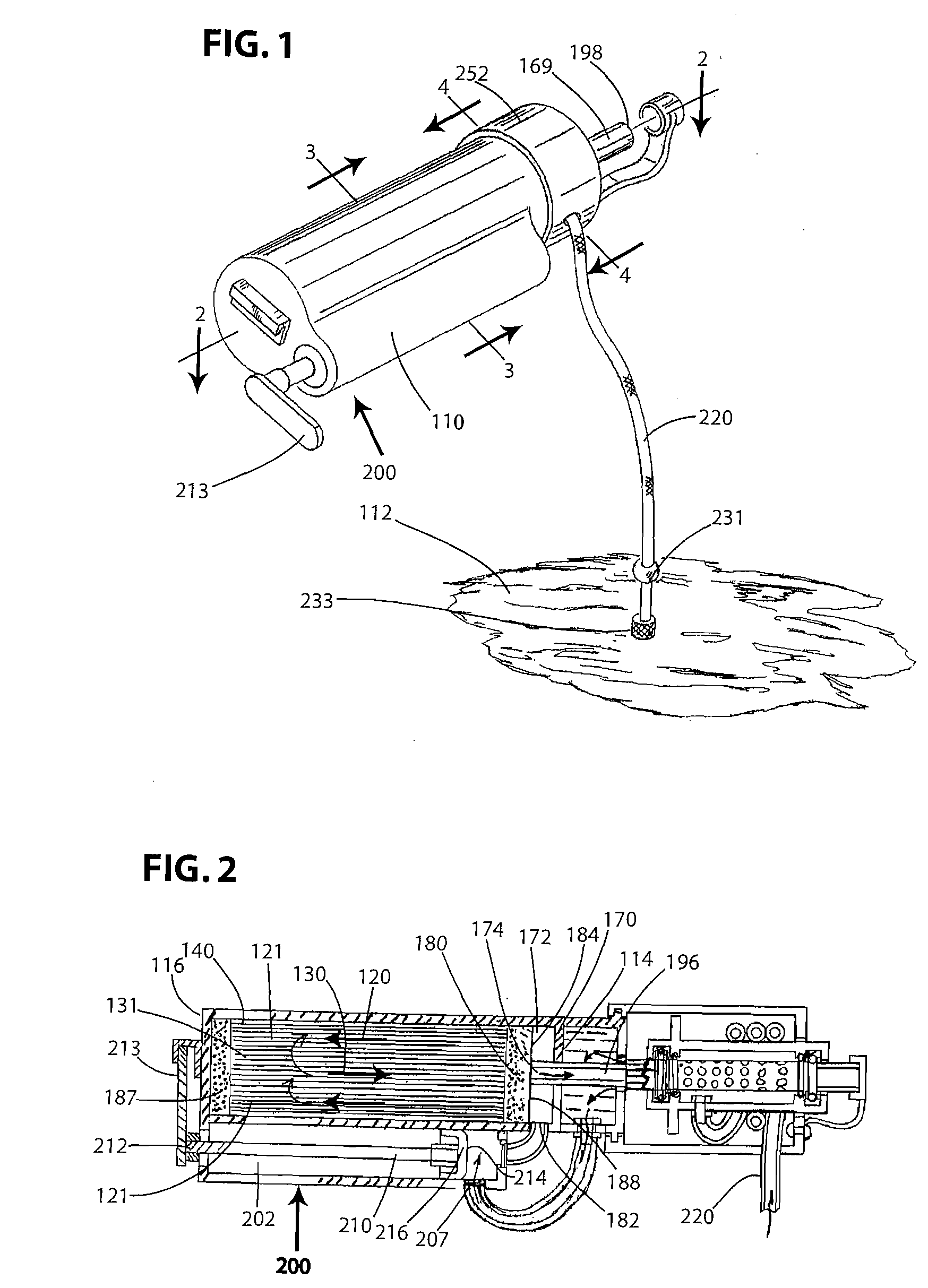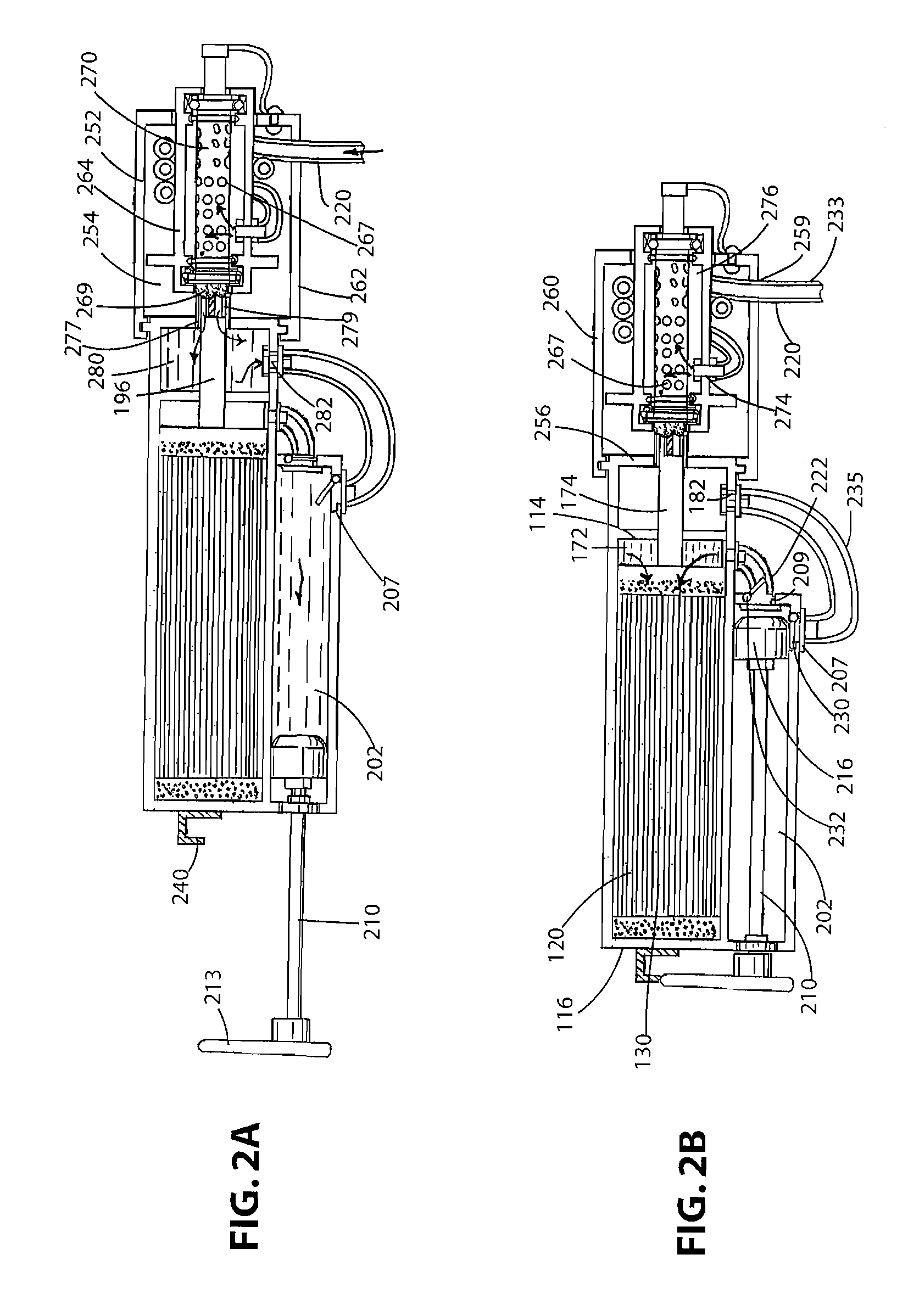For example, when camping or hiking, it is very cumbersome to carry the necessary
water supply due to the sheer weight of the water itself.
This makes it difficult since it is an absolute requirement for an individual to consume the necessary amounts of water to replenish fluid in the water and remain properly hydrated.
Unfortunately, access to a
potable water supply may be difficult if not impossible depending upon the circumstances and the precise location.
For example, when camping or when otherwise being in a natural setting, it may be unsafe to drink running water from rivers, streams, lakes, etc., since these sources may contain
foreign matter, such as microorganisms, organic wastes, etc., that can at the very least lead to sickness and discomfort and at worst, can even lead to serious health concerns and even death in the most extreme situations, as when harmful chemicals or poisonous natural elements are consumed.
However and as previously mentioned, it is difficult to carry and / or generate a sufficient supply of drinking water when an individual is located in a remote location, such as the
wilderness even when there is abundant water around since the water may not be potable.
While there has been work done in the field of portable
water treatment facilities, these facilities and systems tend to be either too complex, cumbersome and generally impractical since they most often are not that portable in design.
One type of
water treatment device is a wearable hydration pack that provides a mobile attempt to purify water; however, as described below, there are number of disadvantages associated with this type of device.
More specifically, this type of wearable hydration pack contains a single flexible bladder; however, these devices only generally store water used for drinking.
If the user is in a remote or dangerous location, such as in a military operation, it may be unsafe to remain at this
water source for an extended period of time.
For the case where one fills the bladder with un-
purified water and relies on a purification device at the outlet of the bladder, the user is limited to the output of the purification device when drinking the water.
In a number of applications,
tap water from a municipality can not be used even for
bathing of a patient that may have a suppressed or weakened
immune system or has some other condition where particulate and other
foreign matter, including
bacteria, contained in the
tap water can jeopardize the health of the patient.
This is merely one example of a type of
bacteria that can be present in water and cause
health problems and in some cases be fatal when consumed or when the patient comes into contact with infected
potable water.
Other types of
bacteria can cause
stomach ailments when consumed or other undesired health issues.
If however, the air pressure on one side of the filter membrane exceeds a certain threshold value that is sufficient to displace water from the pores of the membrane (which is held by
surface tension and capillary forces), a considerable amount of air crosses the membrane.
This results in a
stream of bubbles appearing on the downstream side of the filter (i.e., the
bubble point method) or a considerable decay in the upstream pressure (
pressure decay method).
Several different techniques have been proposed for checking the integrity of a filter; however, these techniques have associated disadvantages.
In addition, another technique uses redundant filters with the particles in front of the
fist filter and the sensor between the filters.
However, each of the above techniques has associated disadvantages, with one being that the process requires either additional parts (e.g., sensors) or requires the addition of an additional substance, such as dye or particles, etc.
This complicates and makes the integrity checking process more cumbersome and costly.
For example, when camping or hiking, it is very cumbersome to carry the necessary
water supply due to the sheer weight of the water itself.
This makes it difficult since it is an absolute requirement for an individual to consume the necessary amounts of water to replenish fluid in the body and remain properly hydrated.
Unfortunately, access to a
potable water supply may be difficult, if not impossible, depending upon the circumstances and the precise location.
In addition, in locations that are either remote and / or dangerous, such as a military operation, it may be difficult for a person to have the time or ability to purify a
water supply.
For example, when camping or when otherwise being in a natural setting, it may be unsafe to drink running water from rivers, streams, lakes, etc., since these sources may contain
foreign matter, such as microorganisms, organic wastes, etc., that can at the very least lead to sickness and discomfort and at worst, can even lead to serious health concerns and even death in the most extreme situations, as when harmful chemicals or poisonous natural elements are consumed.
However and as previously mentioned, it is difficult to carry and / or generate a sufficient supply of drinking water when an individual is located in a remote location, such as the
wilderness, even when there is abundant water around since the water may not be potable.
While there has been work done in the field of portable
water treatment facilities, these facilities and systems tend to be either too complex, cumbersome and generally impractical since they most often are not that portable in design.
 Login to View More
Login to View More 


